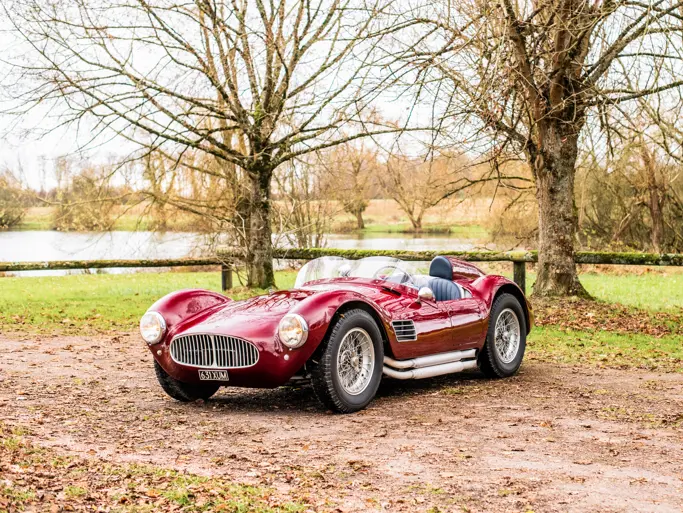In terms of styling, the Continental Mark II was a departure from what Americans were accustomed to from a luxury car 1950s. With excellent proportions and lines penned by Fords newly formed and independent Continental Division, the car possessed an understated beauty, striving for elegance in place of flamboyance. Hoping to regain the Continental’s prestige, Ford created a whole new organization, designated simply “Continental Division,” headed by Edsel Ford’s youngest son, William.
Americans expected a car laden with chrome, set off by a high contrast two-tone paint scheme and space age inspired styling elements. What they saw in the Mark II was a long and low car with proportions similar to the Thunderbird, but enlarged, all the while paying homage to the Continental of the 1940s with the trunk lid molded to the shape of the spare tire concealed within. Under the four-pointed star mounted on the hood, which would later become the Lincoln emblem, rested a 300 horsepower 368 cubic inch engine mated to a three-speed automatic transmission.
Mostly hand-made, the Mark II was a rolling piece of art and a product of exceptional craftsmanship. The paint was wet sanded, double-lacquered and polished to a shine that even the best industrial painting techniques of the period could simply not achieve. Only the very finest materials were used throughout the instrumentation displayed the precision of a finely crafted watch. The amenities and more did not come cheaply and even with a sticker of $10,000 Ford lost $1,000 per car sold. With a price tag equaling Rolls-Royce and far exceeding the Lincoln Premiere Series of the same year, the Mark II only attracted clients of considerable wealth - the rich and famous. Elvis Presley, Frank Sinatra, Nelson Rockefeller and President Dwight D. Eisenhower were all proud owners of a Mark II as was the Shah of Iran.
Conceived as the height of automotive fashion, its public debut at the Paris Motor Show of 1955 was fitting. Before the car had been publicly released, 1,300 examples were sold with another 1,300 sold the first year of production in 1956. In 1957, only 444 were produced, making the total production just over 3,000 examples strong. At present, it is believed that the number of surviving is about half and in various conditions.
This is fine example of an ultra-rare Black on Black 1956 Lincoln Continental Mark II with factory air conditioning; this is the only option that this exceptional car even offered in 1956. This conservative, but distinctive car has an impressive list of standard equipment. This includes power steering, brakes, windows, seat and door locks; heater, full instrumentation, AM radio, carpet throughout, dual exhaust, whitewall tires and pushbutton lubrication. This Mark II displays an older restoration that still shows very nice and it is notable that the clock still works and that it has been fitted with a power-operated sunroof of later specifications that fits flush and retracts in the manner one is likely accustomed to with most late model cars. An updated radio is also fitted in the dash of the luxuriously laid out interior.
In no way was the Continental Mark II a typical Lincoln. In fact, its development by the Continental Division and the virtual omission of the Lincoln name signaled a certain degree of autonomy for the super-luxurious two-door. With such marques as Duesenberg, Cord and Peerlees relegated to the annals of history, Ford's project was aimed from the outset at luxury strongholds - Packard and Cadillac. The Divisions goal of crafting “The finest automobiles in America" was lofty, but by all accounts, a stylistic success, even as Ford lost money on each example produced. To this day, the Continental Mark II remains a vehicle of great distinction, a timeless American classic and a welcome presence in any show event or collection.



 | Auburn, Indiana
| Auburn, Indiana


